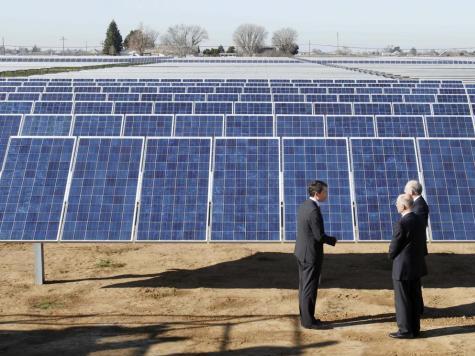
California’s aggressively pro-solar energy laws and regulations have helped solar companies and homeowners who have installed solar rooftop panels, but they are poised to hurt most “non-solar” residential electricity customers in the state.
Those customers who utilize traditional energy services are expected to experience rate hikes soon to make up for lost transmission and distribution costs the utility companies aren’t collecting from customers with solar rooftops, according to financial analysts who track the industry.
Thursday’s initial public offering of stock in California based Solar City Industries brought the solar industry’s reliance on continued subsidies from state and federal sources for its survival back into the news. Wall Street responded positively to the new solar stock, as the price rose 37% from its opening at $8.00 per share to its closing at $11.79 per share in its first day of trading.
But as the company’s own prospectus acknowledges, without a specific subsidy program known as “net-metering” offered in the states in which it operates, it may have difficulty surviving:
California utilities are currently required to provide net metering to their customers until the total generating capacity of net metered systems exceeds 5% of the utilities’ “aggregate customer peak demand.” This cap on net metering in California was increased to 5% in 2010 as utilities neared the prior cap of 2.5%. If the current net metering caps in California, or other jurisdictions, are reached, future customers will be unable to recognize the cost savings associated with net metering. We substantially rely on net metering when we establish competitive pricing for our prospective customers. The absence of net metering for new customers would greatly limit demand for our solar energy systems.
Like many solar companies, Solar Cities has benefited from California’s aggressive policies to promote the growth of the solar industry. Since its founding in 2009, the number of solar rooftop panels installed by the company annually has more than quadrupled, from 2,836 in its first year to more than 13,000 in the first six months of 2012. An estimated half of these installations have come in its home state of California.
A number of financial analysts, however, have pointed out that these pro-solar policies have come at a cost: financial losses for the state’s electric utility companies and anticipated higher prices for residential consumers of electricity who haven’t installed solar panels on their rooftops.
The culprit is the state’s “net-metering” policy, which requires California utilities to buy power generated from residential customers using solar roof panels at the same retail price the utilities sell the power to customers.
As a consequence, the profit margin utilities normally obtain in the difference between the lower wholesale price they are charged when they purchase power from other utilities (roughly equivalent to the cost of production from their own power plants) and the retail price they charge customers is completely eliminated. Utilities, which are publicly regulated natural monopolies, use this profit margin to cover the cost of building their transmission and distribution infrastructure.
As a result, the state’s utilities are forced to give millions of dollars needed for transmission and distribution lines back to customers with solar rooftop panels. As Bloomberg News reported on Monday:
SDG&E currently can’t collect about $18 million to $20 million a year in grid costs from customers with rooftop solar panels, according to Dan Skopec, vice president of regulatory affairs for San Diego-based Sempra Energy (SRE), the utility’s owner.
The utility will be shifting about $200 million in annual costs to customers without panels when the state reaches its cap, Skopec said in an interview. Solar customers “avoid charges, not just for energy, but also the costs of the transmission and distribution system,” he said. “That’s why we say it is not sustainable.”
Southern California Edison will transfer about $400 million in annual costs to people without solar systems when the state hits the cap, David Song, a spokesman, said in an interview. PG&E Corp. (PCG)’s Pacific Gas & Electric, the state’s biggest utility, will pass on about $700 million a year, according to Denny Boyles, a spokesman, for a total of $1.3 billion from the three utilities.
Wall Street analyst March Bachman of Avian Securities believes this pricing model is only going to make things worse over time:
“The problem exacerbates with each new system that goes on a roof. Utilities will need to get reimbursed for their grid costs by a shrinking number of consumers.”
Most observers are skeptical that political leaders in California are likely to experience a sudden free market epiphany and allow the state regulated electric utilities to set their “net metering” buy back prices at wholesale levels, a necessary step to avoid increasing prices for all other customers. This is, after all, the state where those same leaders are oblivious to the dangers posed by the massive budget deficits caused by decades of out of control spending.

COMMENTS
Please let us know if you're having issues with commenting.